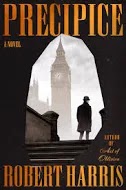Sarah Bryan Miller recently had a post up at the St. Louis Post Dispatch in which she responded to a question asked by the New York Times Art Beat Blog: How does an orchestra earn its status?
The discussion was occasioned by the gift of $85 million to Cincinnati arts groups by a put-your-money-where-your-mouth-is patron named Louise Dieterle Nippert. Wakin, reporting on this, got a storm of reaction over calling the respected Cincinnati Symphony Orchestra, one of the major beneficiaries of the gift, a “regional orchestra.”
Why, SBM wonders, are orchestras as good as Cincinnati’s and the Saint Louis Symphony Orchestra classified as regional when they regularly play better than orchestras in the ‘Big 5’. She made me chuckle:
The New York Philharmonic is the only symphony orchestra in the United States older than the SLSO; it’s in the center of the American artistic universe, and it can have its pick of players. But I’ve heard the NY Phil play like absolute pigs, reportedly because they collectively detested the conductor. (”It’s hard to play well for a conductor you don’t respect,” said a freelancer friend who sometimes works with them. I dunno; when I was a professional singer, that attitude wouldn’t have washed - and most listeners are going to blame the people producing the wrong notes, not the guy with the stick.) I can’t imagine the members of the SLSO pulling a stunt like that.
I love irreverence toward the New York Philharmonic.
I don’t get too worked up that the SLSO doesn’t get as much recognition as orchestras from larger cities. It makes it easier to recognize the people who really know what they are talking about from the poseurs. For instance, I’ve never been a big fan of Alec Baldwin and had no idea he was a classical music fan until I read this New York Times piece about his love of classical music and his relationship with the New York Philharmonic. And even as I was reading I wasn’t really sure how serious I was taking it until I read this:
Asked about his favorite performances, he rattled them off: “The Solti Mahler Ninth. Any Copland with Slatkin when he was in St. Louis. I like the Mahler cycle that Tilson Thomas did.”
And I realized he was serious. Because SLSO recordings of Copland from back in the 80’s are fabulous. I have a hard time listening to other orchestras’ interpretations of Copland because I think Slatkin’s are the gold standard.
People who really love a type of music always know who can really play it. Worldwide fame isn’t important; playing famous venues isn’t important. It’s the talent that counts. It’s like back in the 20’s when white musicians knew that Louis Armstrong was a huge talent even though he wasn’t allowed to play certain venues because of racial segregation. They would go to his venues after hours and jam with him. Because they knew how good he was. It’s the same in the classical music world.
SLSO has a CD out right now, a recording of John Adam’s Dr. Atomic Symphony. It is getting critical acclaim. It seemed that the SLSO fell off of many people’s radar after Slatkin left but now the radar is picking up a bleep. (Full disclosure: I hated the Hans Vonk years and even cancelled my subscription, I was so bored during those years by what they were playing. So I can’t blame anyone too much for ignoring SLSO during those years.)
Maybe I’d just rather be a big fish in a little pond than a little fish in a big pond, but I don’t really see any downside to being one of the best “regional” orchestras in the world. As long as the word “best” is out there.
